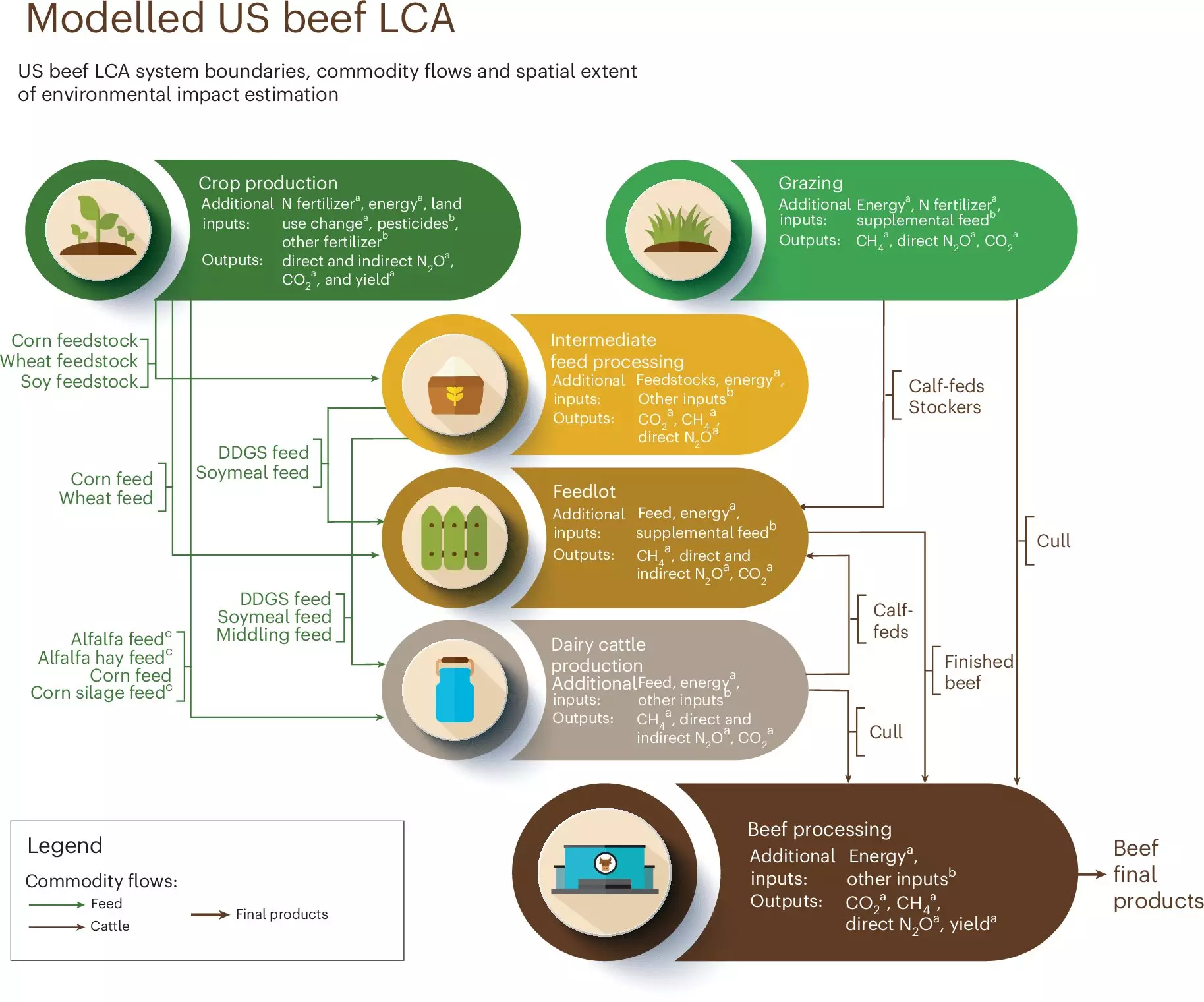In recent decades, human activities have catalyzed unprecedented changes in our climate, primarily through the excessive release of greenhouse gases (GHGs). Among the culprits, the agricultural sector stands out, with the U.S. beef industry accounting for a significant chunk of the nation’s overall emissions—approximately 3.3%. Despite ongoing efforts to mitigate these impacts, including commitments from various beef industry stakeholders, the inherent complexity of the supply chain poses substantial challenges. Yet, a groundbreaking study published in *Nature Food* by researchers from the University of Minnesota’s Institute on the Environment (IonE) and The Nature Conservancy illuminates potential pathways toward substantial emissions reductions.
Central to this research is the development of a detailed county-level assessment of the beef industry’s environmental footprint. This is a pioneering approach that pinpoints location-specific emissions patterns and identifies key areas of concern across the supply chain. The findings underscore a sobering reality—U.S. beef production generates nearly 258 million metric tons of GHGs annually. Notably, emissions from feed production and confinement, particularly in regions like the Great Plains and Midwest, present concentrated opportunities for intervention. Meanwhile, grazing-related emissions are more geographically dispersed, particularly in the Western states.
Through their exhaustive analysis, the researchers discovered that nearly one-third of the GHG emissions stemming from the beef industry could be significantly curbed with the adoption of alternative practices across various facets of production. They meticulously examined 42 innovative strategies—including cover cropping, feed additives, and improved energy management—that could potentially transform the industry’s approach to sustainability.
As the research articulates, the beef supply chain is notably complex, which complicates the identification and implementation of emission-reduction strategies for processors and ranchers alike. Rylie Pelton, the lead author and research scientist, emphasized that their nuanced assessment not only provides insights into emission hotspots but also offers customized recommendations tailored for specific regions in the country. This targeted approach is essential in not only mitigating emissions but also maximizing carbon sequestration in agricultural soils.
For instance, one recommendation involves integrating more trees into pasturelands in the Southeastern U.S. to enhance carbon storage capacity—an idea that aligns with broader ecological benefits. In the Northern Great Plains, restoring damaged wetland areas has emerged as another potent strategy. By focusing on region-specific solutions, the study seeks to empower the beef industry with actionable steps to promote sustainable practices.
The implications of this research extend beyond just environmental considerations; they also resonate with economic stability and community sustainability. Kris Johnson, co-author of the study, argues that for the U.S. beef industry to thrive in the long term, sustainability must transition from being an afterthought to a core operational principle. The interdependencies between food production, ranching economies, and environmental health necessitate an integrated approach to addressing climate challenges.
By establishing sustainability as a fundamental business norm, the beef industry can secure the livelihoods of ranchers and ensure continued food production that aligns with consumer expectations—an increasingly important factor in today’s market. The insights from this research not only help the industry align with climate targets but also reinforce the notion that ecological stewardship can coincide with economic viability.
This pioneering research also signals progress in the broader conversation around food systems and climate change. Through the IonE’s FoodS3 model, which assesses sustainability across various food supply chains, there is a clear demand for transparency and accountability in the production processes that define our food systems. As consumers become more aware of the environmental impacts associated with their dietary choices, industries across the board, not just beef, must respond to the call for more sustainable practices.
The findings from this research highlight that substantial emissions reduction in the U.S. beef industry is not only feasible but also urgent. As stakeholders adopt the recommended practices, the path towards a sustainable future for beef production can potentially lead to rippling benefits across the agricultural sector and beyond. The integration of climate-conscious strategies must no longer be viewed as optional but rather as essential to securing both environmental and economic futures.


Leave a Reply